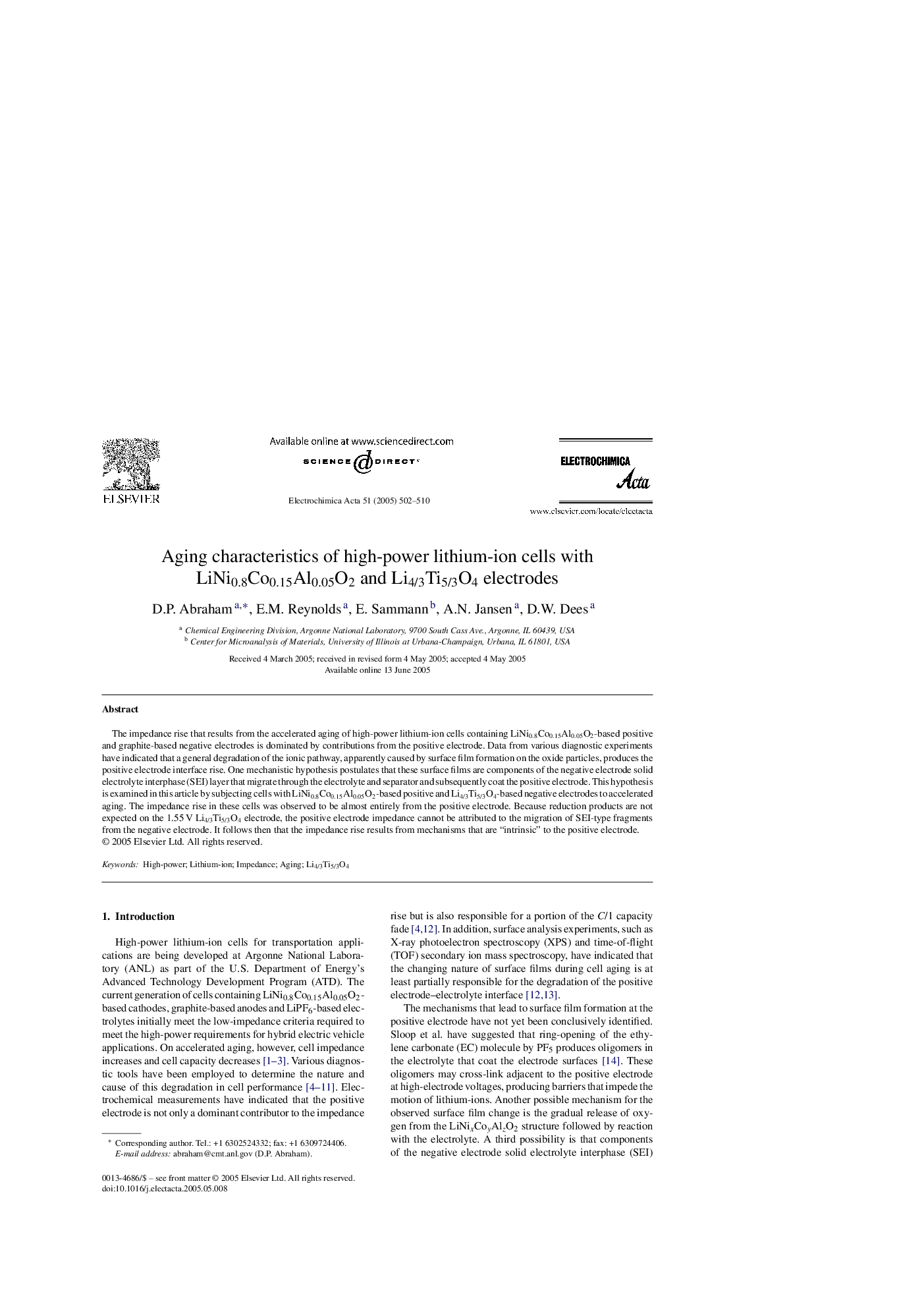| Article ID | Journal | Published Year | Pages | File Type |
|---|---|---|---|---|
| 10269483 | Electrochimica Acta | 2005 | 9 Pages |
Abstract
The impedance rise that results from the accelerated aging of high-power lithium-ion cells containing LiNi0.8Co0.15Al0.05O2-based positive and graphite-based negative electrodes is dominated by contributions from the positive electrode. Data from various diagnostic experiments have indicated that a general degradation of the ionic pathway, apparently caused by surface film formation on the oxide particles, produces the positive electrode interface rise. One mechanistic hypothesis postulates that these surface films are components of the negative electrode solid electrolyte interphase (SEI) layer that migrate through the electrolyte and separator and subsequently coat the positive electrode. This hypothesis is examined in this article by subjecting cells with LiNi0.8Co0.15Al0.05O2-based positive and Li4/3Ti5/3O4-based negative electrodes to accelerated aging. The impedance rise in these cells was observed to be almost entirely from the positive electrode. Because reduction products are not expected on the 1.55Â V Li4/3Ti5/3O4 electrode, the positive electrode impedance cannot be attributed to the migration of SEI-type fragments from the negative electrode. It follows then that the impedance rise results from mechanisms that are “intrinsic” to the positive electrode.
Related Topics
Physical Sciences and Engineering
Chemical Engineering
Chemical Engineering (General)
Authors
D.P. Abraham, E.M. Reynolds, E. Sammann, A.N. Jansen, D.W. Dees,
